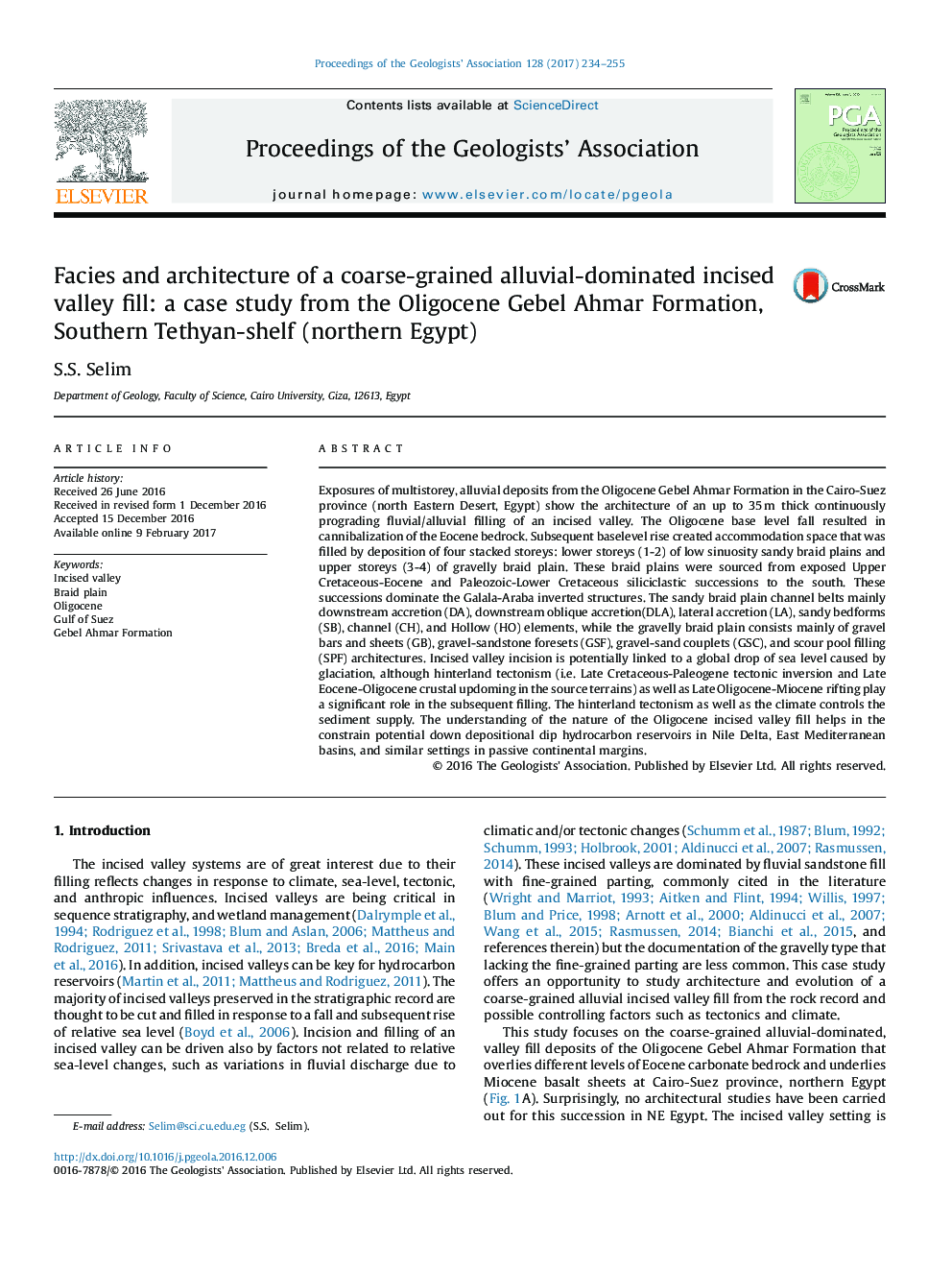| Article ID | Journal | Published Year | Pages | File Type |
|---|---|---|---|---|
| 5786477 | Proceedings of the Geologists' Association | 2017 | 22 Pages |
Abstract
Exposures of multistorey, alluvial deposits from the Oligocene Gebel Ahmar Formation in the Cairo-Suez province (north Eastern Desert, Egypt) show the architecture of an up to 35Â m thick continuously prograding fluvial/alluvial filling of an incised valley. The Oligocene base level fall resulted in cannibalization of the Eocene bedrock. Subsequent baselevel rise created accommodation space that was filled by deposition of four stacked storeys: lower storeys (1-2) of low sinuosity sandy braid plains and upper storeys (3-4) of gravelly braid plain. These braid plains were sourced from exposed Upper Cretaceous-Eocene and Paleozoic-Lower Cretaceous siliciclastic successions to the south. These successions dominate the Galala-Araba inverted structures. The sandy braid plain channel belts mainly downstream accretion (DA), downstream oblique accretion(DLA), lateral accretion (LA), sandy bedforms (SB), channel (CH), and Hollow (HO) elements, while the gravelly braid plain consists mainly of gravel bars and sheets (GB), gravel-sandstone foresets (GSF), gravel-sand couplets (GSC), and scour pool filling (SPF) architectures. Incised valley incision is potentially linked to a global drop of sea level caused by glaciation, although hinterland tectonism (i.e. Late Cretaceous-Paleogene tectonic inversion and Late Eocene-Oligocene crustal updoming in the source terrains) as well as Late Oligocene-Miocene rifting play a significant role in the subsequent filling. The hinterland tectonism as well as the climate controls the sediment supply. The understanding of the nature of the Oligocene incised valley fill helps in the constrain potential down depositional dip hydrocarbon reservoirs in Nile Delta, East Mediterranean basins, and similar settings in passive continental margins.
Keywords
Related Topics
Physical Sciences and Engineering
Earth and Planetary Sciences
Geology
Authors
S.S. Selim,
